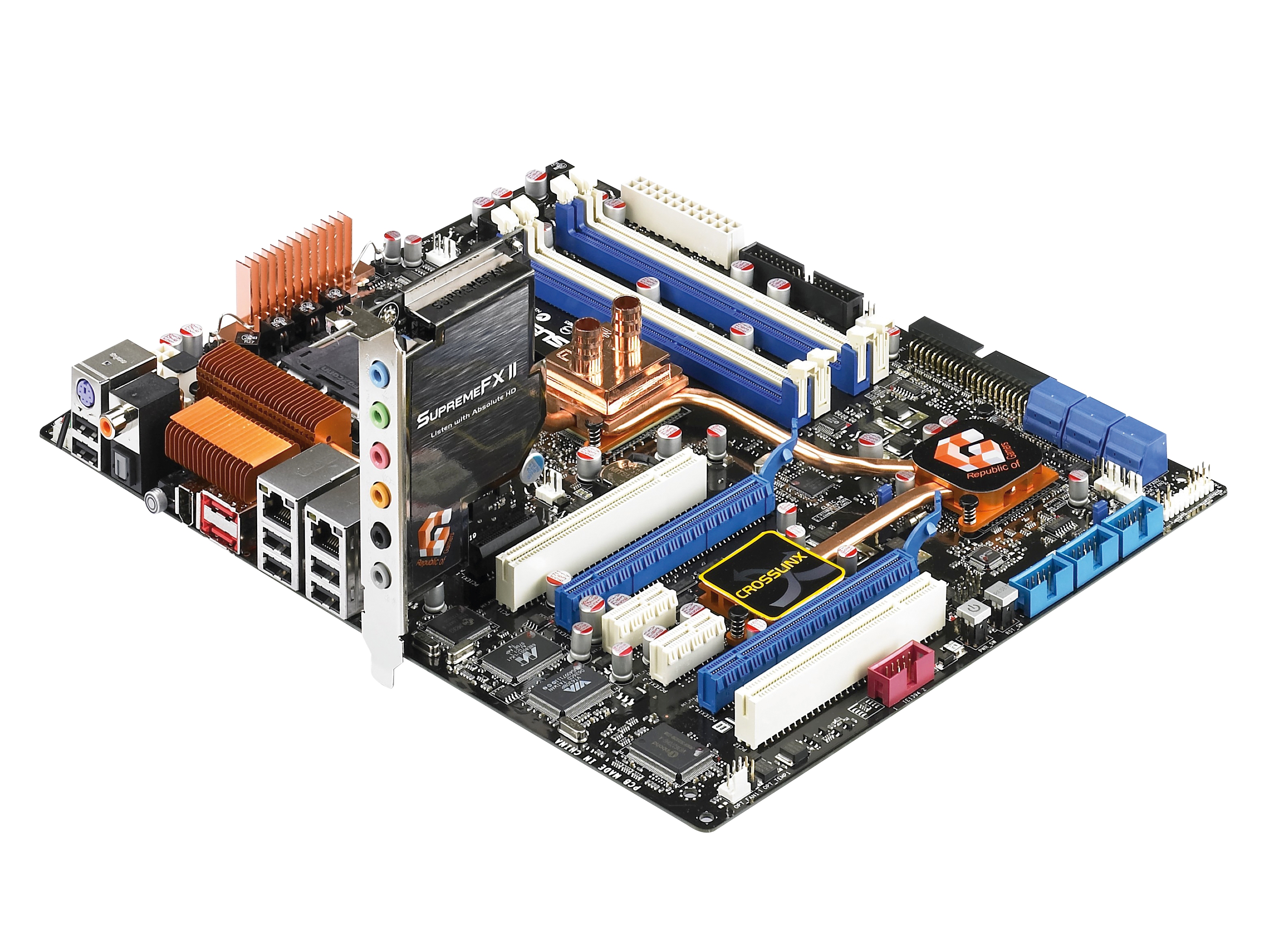TechRadar Verdict
About as fine a companion as a Core 2 could hope for; if only it had SLI...
Pros
- +
Olympian overclocking prowess
A raft of handy and silly extras
Cons
- -
CrossFire: meh
Some design boo-boos
Why you can trust TechRadar
There's a bit of confusion surrounding this. Have ASUS made us a bespoke motherboard? It seems tailor-made for our benchmark marathons.
Hardwired buttons for power and reset are on the board, so we don't have to fit it inside a case to test chips, or resort to poking the power switch pins with a screwdriver.
A big illuminated CMOS reset switch on the rear of the board means our overclocking SNAFUs can be erased from history in a trice. There's even an LCD clock to remind us just how many hours we'd spent locked in a little room with 3DMark. Joy!
Of course, it's really designed for what ASUS dubs hardcore gamers, which, in reality, is a bunch of guys who spend their time benchmarking and clocking for their own edification, and those buttons will delight them as much as me. The Blitz even has built-in watercooling connections and pipes, which double up as standard passive cooling blocks. Handy.
It overclocks like a dream, too - this was the board we took the Intel 3GHz QX6850 to 3.6GHz last issue. It exceeds Intel's own spec for the P35 chipset it uses by stomaching the 1,333MHz FSB of recent Core 2s.
And far beyond - with the chip's bus pushed to 400MHz, this ran an FSB of 1,600Mhz. With the multiplier dropped, we made it to 460MHz/1840MHz - still air-cooled. The Blitz's auto-management of voltage tweaks is impressive - we didn't have to fiddle with the juice to hit 3.6GHz.
Vast sub-menus of BIOS options are on offer, however. If you're a performance nutter though, you may wish to direct your gaze to the Blitz Extreme, which supports DDR3, as opposed to the Formula's more Earthly DDR2.
Problems? Well, those passively-cooled chipset blocks run awful hot if you don't connect water to them, so you'll end up with an oven inside your case if it's not extensively fanned.
The soundcard's irksome too - you need the bundled daughterboard if you want to hear anything, as one of those cooling blocks lurks where you'd normally find the onboard outputs.
It's a waste of space for what's a very ordinary sound chip, but at least if you plump for a superior Creative X-Fi instead, you can remove the daughterboard entirely. The absence of SLI, though it's Intel's fault, is a kick in the teeth too - CrossFire's there, but hardcore gamers don't want ATI cards right now.
Still, this is nitpicking for what is a spectacular overclocking board. It carries a hefty price tag and is complete overkill for anyone happy to run at stock speeds, but if you're keen to thrash the last inch of speed out of your Core 2, this is surely the mobo to do it with.
Tech.co.uk was the former name of TechRadar.com. Its staff were at the forefront of the digital publishing revolution, and spearheaded the move to bring consumer technology journalism to its natural home – online. Many of the current TechRadar staff started life a Tech.co.uk staff writer, covering everything from the emerging smartphone market to the evolving market of personal computers. Think of it as the building blocks of the TechRadar you love today.

